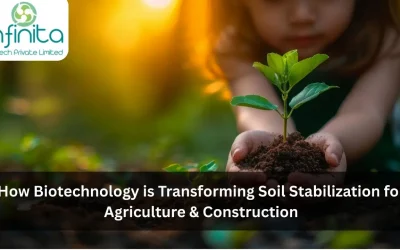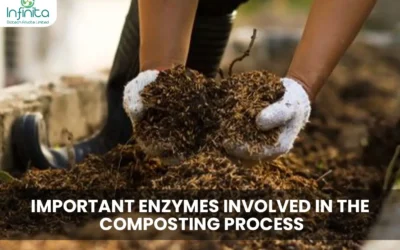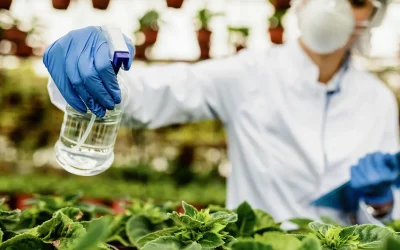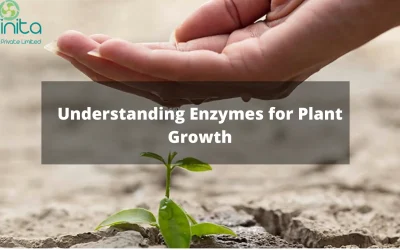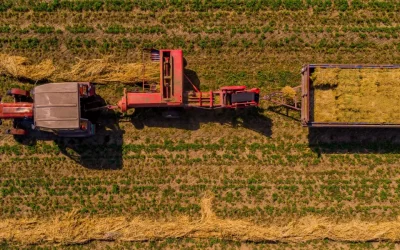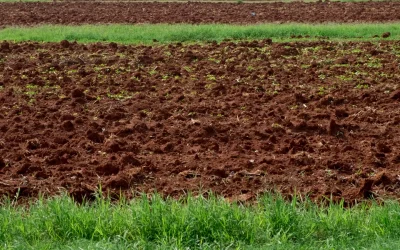How do Enzymes help In Plants Growth? 3 Best Enzymes For Plants
Well, let’s take things back to the basics of complex molecular-breakdown, enzymes are naturally occurring compounds that are present almost everywhere, responsible for chemically breaking down complex nutrients or molecular structures that are most essential in processes and conditions like digestion and biodegradation respectively, which we all know are extremely important on many levels because if either of the two were to cease on themselves life would either be very different from what we know it to be today or it would be impossible or in other words, inhospitable for life to bloom. This helps us derive that enzymatic presence has been thriving among the key ingredients like carbon, nitrogen, phosphorous, etc, the ingredients that make life possible not only terrestrially but throughout our universe, so wherever you find life, know that there are numerous enzymes for plants working their magic for maintaining the overall balance through the process of creation, degradation and recreation.
Think about it, every time a cellular structure either builds itself or is under the process of breaking down for bonding with another structure, it is an array of reactions, like multiple Bang-Bangs on the microscopic level under the catalytic influence of enzymatic activity that is bringing about this structural alteration at the molecular level. So, from the time of an organism’s inception-phase, a fetus in the case of a mammal, pollination or seeding in the case of a plant and so on — to ensuring the conversion of nutrients into simple compounds and necessary hormonal explosions that packs the energy of a mini atomic bomb, however, at a much more controlled and stable rate which is necessary for forming the bones, peripheral nervous system, the heart including the most complex neural connections that are collectively known as the Central Nervous System, in other words; the brain. Enzymes also ensure the breaking down of complex carbohydrates, protein, and fats into a more absorbable compound in mammals, in fact, the process of breaking down carbohydrates into simple sugars begins in the mouth itself as the saliva in our mouth, which is also an enzyme, commences the break-down process. Relatively, plants too require enzymes for the absorption of necessary nutrients, carrying out photosynthesis and so on and whenever an animal or plant ceases to be alive, they breakdown too, due to the microbial contribution which pushes for enzyme secretion resulting in decomposition and finally ends up in the earth. This results in nitrogen-enriched soil while also being subject to furthermore enzymatic activity that enriches the soil and breaks down molecules of nitrogen, phosphorus, etc into compounds that are easily absorbable for exhibiting healthy plant growth, thus recreation and the endless circle of life, delicately built and ever-present wherever we gaze.
All-in-all, enzymes are deeply embedded in our life system which is why it is considered as an intricate and tedious science in context of observation or understanding because nobody knows what sets the cycle in motion, it’s independent nature and delicate functioning on multiple levels is why the realm of enzymes continue to be uncharted and makes its existence a mystery and its synthesis difficult.
In adherence to the context, however, the same is true for a plant-kind life-forms, as most of its functioning is yet to be unveiled by science. For example; We’ve already learned that plants make their own food by a conversion process called Photosynthesis. Plants absorb sunlight and carbon-dioxide for processing sugars which conveniently lets out oxygen in the atmosphere as a counter-reaction, naturally, enzymes are involved but to what extent is anybody’s guess. Plants also possess an entire network of root-venations that plant-science and observatory studies are hypothesizing that they resemble the nervous system and functions as a means to communicate similarly i.e via chemical impulses but that would be entering into the genre of Sci-Fi, however, what we do know for sure is that plants use the roots for extracting essential nutrients and minerals like nitrogen and phosphorus from the soil, although unlike photosynthesis, it relies on extracellular microbial enzymatic-activity for breaking down phosphorus and nitrogen-rich compounds into a form that’s absorbable to plants.
Best Enzymes Ideal for Plant Growth
Soil microbes thrive on dead root cells and something called exudates, which is a carbon-rich compound, which powers their growth and their activities that result in enzyme secretion that processes nutrients for plant absorption. In case a patch of soil for agricultural purposes lacks microbial activity, microbial contents beneficial for retaining soil fertility are introduced in the soil or in other cases synthesized enzymes for plants like phosphatase, chitinases and proteases.
1. Phosphatase
Phosphorus, one of the key pillars on which life rests, is highly crucial for energy to move through the system, therefore it is essential for the phenomena called life to set its course in action and in the case of plants we already know how this mineral is made available to them. Although, over time and numerous seasons minerals and salts like phosphorus tend to accumulate with other residuals and form clusters, a condition known as occlusion. The only was the mineral is accepted for assimilation is as dissolved phosphate and plants rely on phosphatase, usually produced by bacteria, fungi, dead root, etc, for the conversion of organic phosphorus into plant-available forms of phosphate.
2. Chitinases
Other than the key elements of life viz Carbon, Hydrogen, Nitrogen, Oxygen, Phosphorus, Sulfur [CHNOPS], plant growth and health is dependent on various other factors. Although over the years plants have also gotten exposed to various other bacterial and virus attacks, most plants are often victims to diseases caused by fungi and nematodes, also known to be the most common and predominant microbes responsible for poor yields in the context of agriculture and farming, which targets plant-immunity and degrades the overall health of the organism.
However, just like humans rely on nutrients like Vitamin-C for building immunity against pathogens and the diseases they bring along, Chitinases is an enzyme that works similarly for plants i.e for enhancing their defence against fungal species like Fusarium, Botrytis and Magnaporthe that are the most common pathogens that affect plant-crop throughout the globe. Chitinolytic enzymes, act aggressively on a key component within the cell wall of a fungal organism called chitin which renders in deterioration of its cell wall while leaving the host plant intact and fostering its growth in terms of yields.
3. Proteases
Protease Enzyme primarily carries out the molecular breakdown of protein-rich compounds, called proteolysis which helps in breaking down nitrogenous compounds and degrading harmful proteins and ensuring the supply of amino acids to individual cells. Like all organisms, plants too require amino acids which are broken down proteins and we all know how essential that is therefore we come to identify this enzyme as a major player common in all forms of physiology for ensuring cellular homeostasis, while posing as a watchdog that regulates antigens, immunity-response, reproduction, growth and development, embryogenesis, photosynthesis, etc., which simply implies that protease exists in numerous structures that are assorted into broadheads of class furthermore classifying them into families, clan and so on, however, in synthesis, protease is commonly synthesized as zymogens. Zymogens are crucial in determining the folding and functioning of mature protease and as earlier mentioned they are branched into a class of seven viz serine, cysteine, aspartic, asparagine, threonine, glutamate and metalloproteases. Serine alone constitutes of 14 families and nine clans.
These were the 3 best enzymes for plants that help in the growth of plants.

